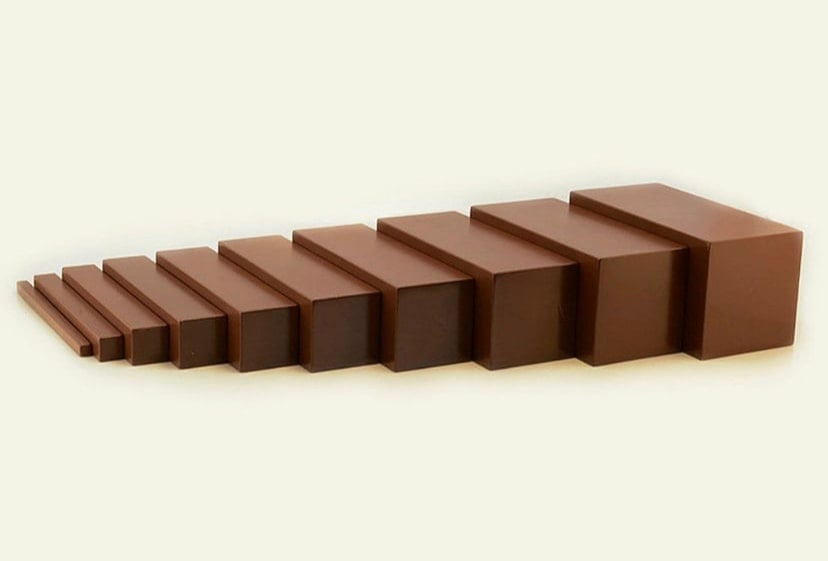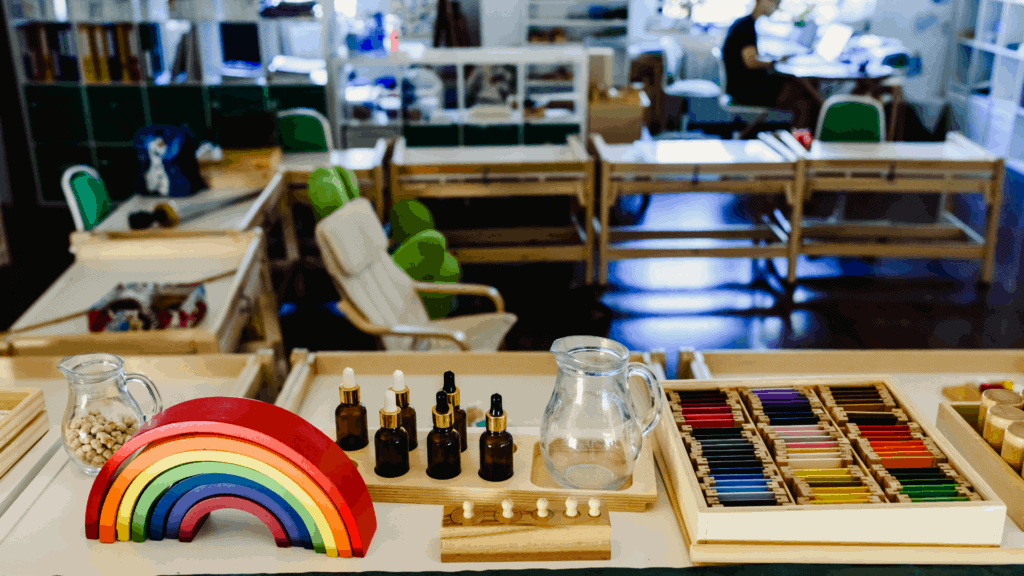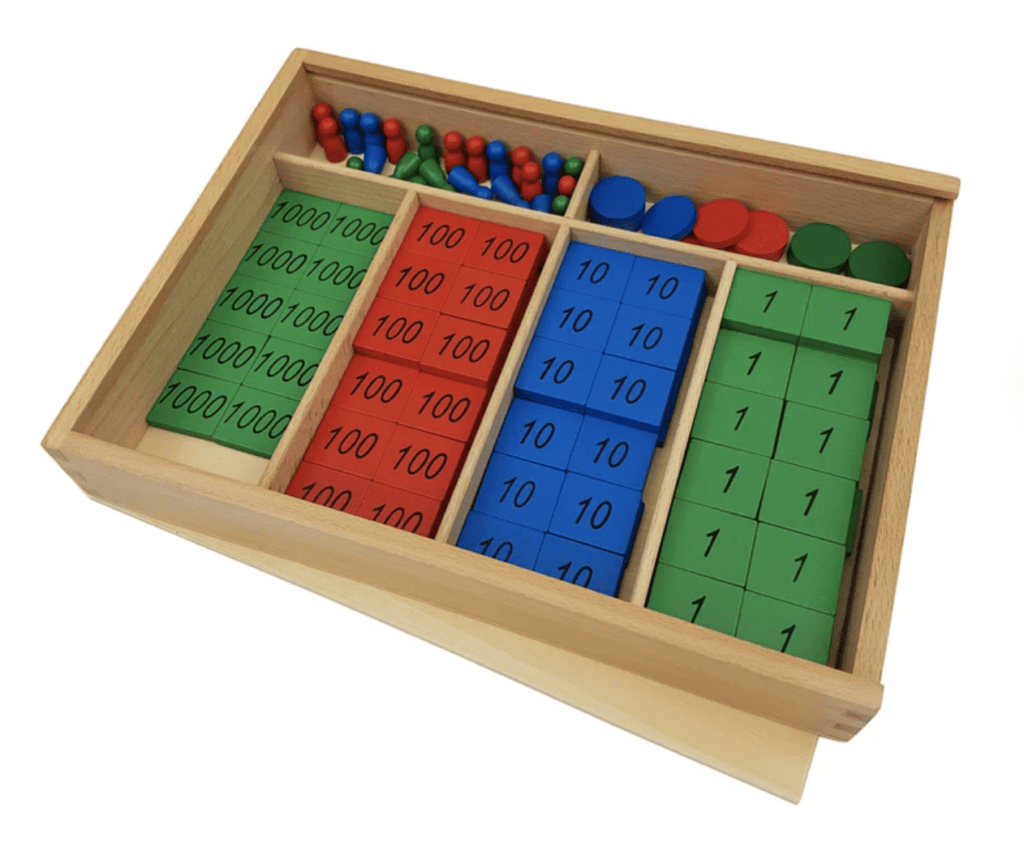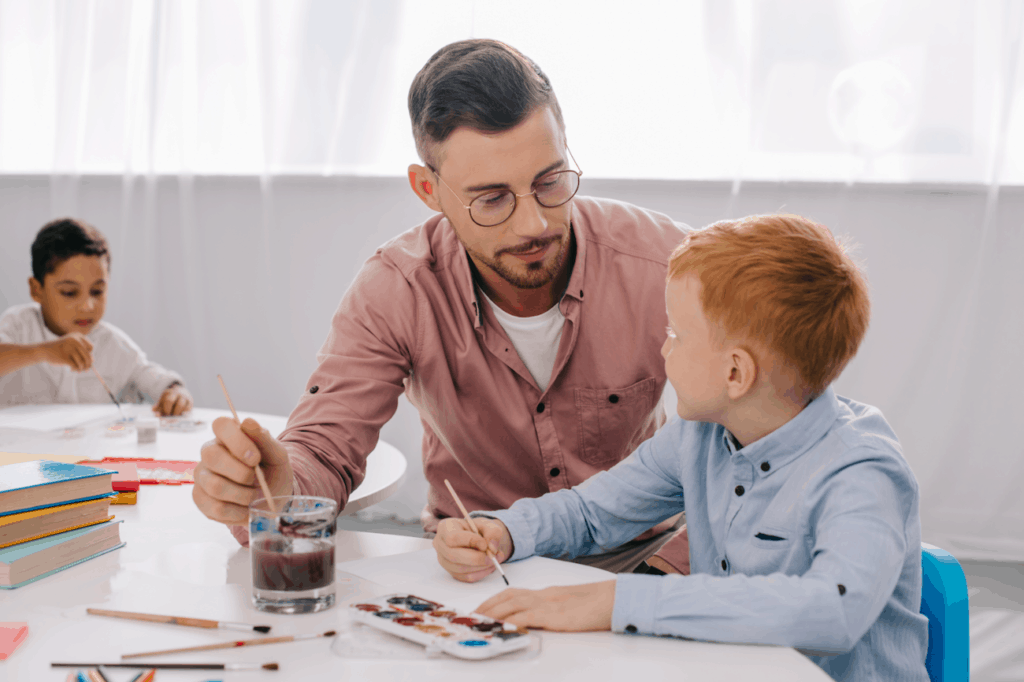Many visitors to
Montessori schools use the five key areas of the
Montessori curriculum areas develop the child’s intellect through active exploration of materials. The self-correcting nature of the materials enables children to develop control over their learning. Each key area consists of a set of materials that increase in complexity as the children gradually progress through the curriculum areas at their own pace. Read on to learn more about the
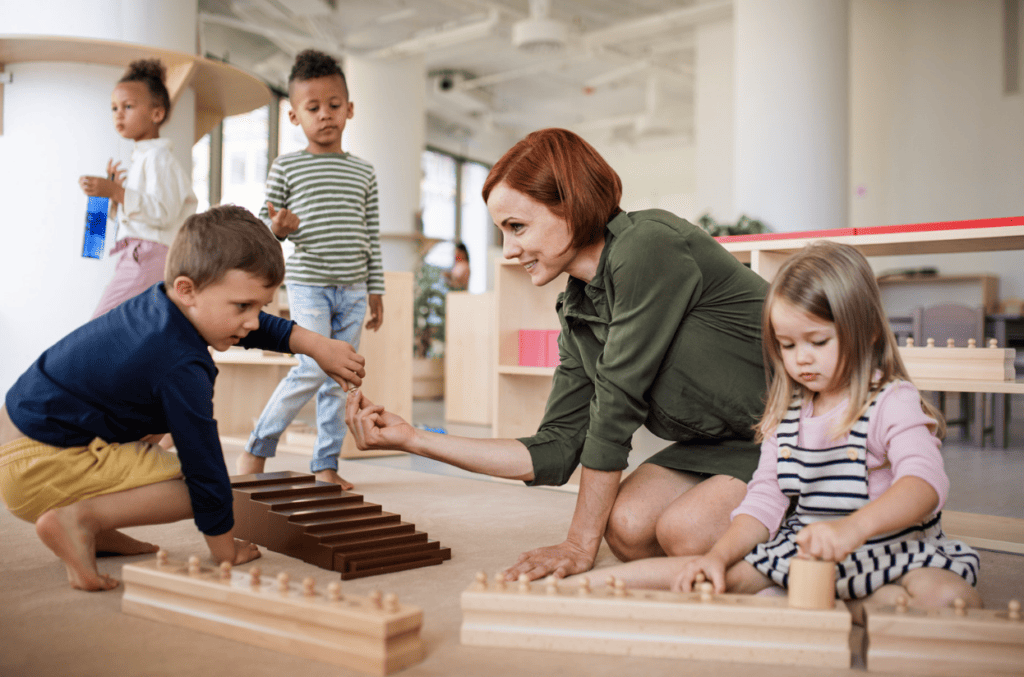
What are the Five Areas of the Montessori Curriculum?
Montessori curriculum areas engage children in age-appropriate activities for attaining their developmental milestones. The curriculum areas are child-centered and involve hands-on learning in the prepared environment.
Here are the five key areas of the
1. Practical Life Exercises: are simple daily activities that help children maintain and control their environments. Practical Life aims to help the child gain control in the coordination of his movement, fine and gross motor skills, and independence.
Practical Life Exercises are divided into four areas:
Practical Life Area 1: Elementary Movement and Preliminary Activities. These activities include,
- How to talk and walk in the classroom
- Use of workspace; how to fold or roll a work mat
- How to carry materials
- Opening and closing of doors and drawers
- Washing and drying hands and the use of a toilet
- Painting and drawing
- Pouring large beans, rice, or water from one container into another
- Transferring objects like rice, and beads from one container to another
- Threading beads on a shoelace
- Cutting patterns with scissors or knife
Practical Life Area 2: Exercises for the Care of Self
- Washing and drying hands
- Changing shoes
- Dressing frames; zip, buttons, lacing, bows
- Polishing of shoes
- Folding of clothes
- Blowing nose
- Care of teeth, nails, and hair
Practical Life Area 3: Exercises for the Care of the Environment
- Sweeping-use of broom, dustpan, and brush
- Use of clothes
- Scrubbing of tables and floors
- Laying of table
- Care of the garden
- Care of pets
- Classroom skills- sharpening pencil, keeping work folders, use of the ruler
- Cooking skills-weighing, measuring, whisking and mixing, rolling and cutting pastries
Practical Life Area 4: Exercises for the Development of Social Skills, Grace, and Courtesy
- Greeting people
- Interrupting ‘Excuse me.’
- Coping with an offense
- Conduct with a visitors
- Behavior on outings
- Helping out
- Table manners and use of eating utensils

2. Sensorial Education
Sensory learning helps the child develop critical thinking, fine and gross motor skills, discrimination of objects by color, shape, size, texture, and maximum refinement of senses.
The following are some of the materials used in teaching the Montessori Sensorial Education;
- Pink tower
- Knobbed and knobless cylinders
- Brown Stairs
- Color boxes
- Flat shapes
- Geometric solids
- Touch boards, fabrics, and tablets
- Sound boxes
- Montessori bells
The child, to Maria
3. Language
The
- Stories and poems
- Rhymes and jingles
- Action songs and finger play
- Picture reading
- Sandpaper letters
- Large movables alphabets
- Pink series for teaching three-letter phonics sounds, phrases, and sentences
- Blue series for teaching consonant blends and longer words
- The green series introduces the child to consonant diaphragms, vowel graphs, and phonemes
- The
Montessori grammar materials for teaching nouns, pronouns, prepositions, and other parts of speech
4. Mathematics
Mathematics is an exciting curriculum, especially when explored with appropriate concrete and didactic materials. The child’s aptitude for mathematics is stimulated, refined, and sustained with the aid of
- Number rhymes and songs
- Counting parts of the body
- Number rods
- Sandpaper numerals
- Cards and counters
- Sequin boards
- Golden beads materials for teaching addition, subtraction, multiplication, and division
5. Cultural Subjects:
Cultural Subjects facilitate the child’s adaptation to the world by bringing the world to the classroom environment.
- Biology- care of plants and animals, animals of the world, pairing cards, nature table, natural habitats and life cycles
- Geography– land and water forms, puzzle map of the world, continent globe, solar system
- History – timeline of a child’s life, telling time, and natural history of the world
- Science- floating and sinking objects, animate and inanimate boxes, making rainbows, magnetism, and other science experiments
What is Unique about the Montessori curriculum?
Now, let us consider these unique characteristics that are inherent in the
Self-correcting Materials:
Freedom of Choice: Children in
Montessori concludes that by working independently, children attain independence and become self-motivated learners.
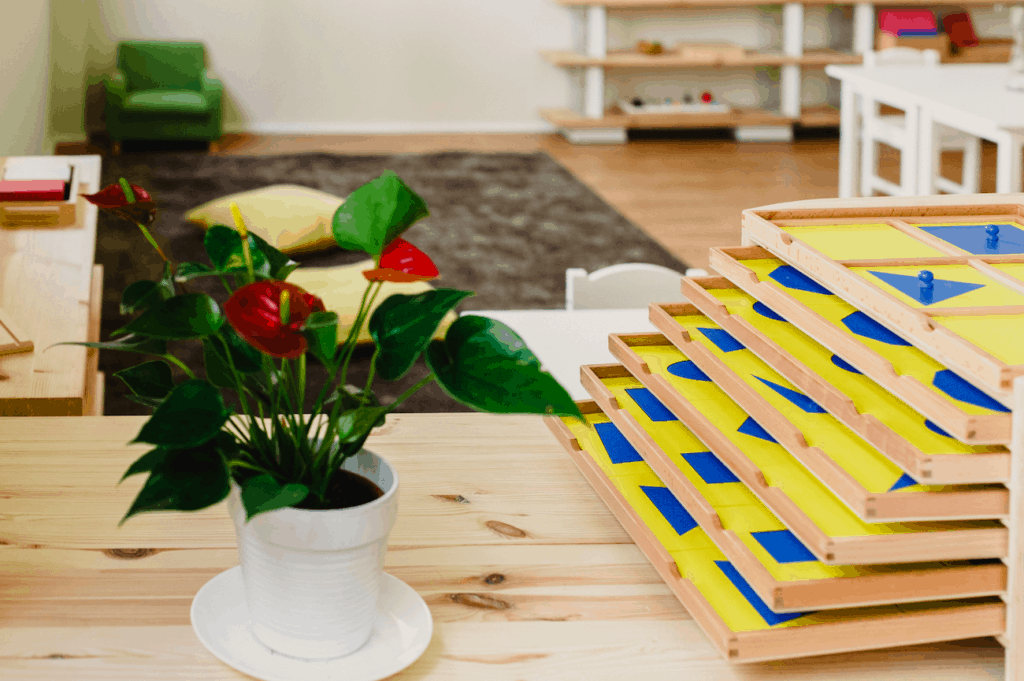
Prepared Environment: Maria Montessori was the first educationist to use child-sized furniture in the classroom. Her first school, the Casa Dei Bambini or House for Children, was designed so that all the
The materials are arranged orderly according to their curriculum area. For instance, materials like jugs, trays, and dressing frames are organized on the practical life shelf, while materials like the pink tower, knobbed cylinders, and color boxes are arranged on the Sensorial Education shelf.
Order is one of the essential features of the
Vertical Grouping: the children in the
Freedom of Movement:
The newcomer to a good Montessori prepared environment soon absorbs the quiet, orderly, calm, respectful, and cooperative atmosphere.
Do Montessori Teachers Follow a Curriculum?
Montessori teachers guide the children through the five curriculum area. They first present the activities to introduce children to the name of the material, learning outcomes, and how to work with each age-appropriate material. After the introductory lessons, the teacher encourages the child to work with the
The children are expected to work with material from each curriculum area daily. They can choose to start from any of the curriculum areas. For instance, if the child decides to work with the polishing shoes from the practical life exercises curriculum, the teacher firsts show how to polish the shoes and then encourages the child to continue.
While working on the materials, the teacher observes and documents their progress or the milestones achieved. New activities are introduced once the child demonstrates an understanding of the activity. Through repetition and practice, children master the progression of the
Montessori teachers are trained to recognize that it is their responsibility to prepare a safe, orderly, and stimulating environment for the children to attain their developmental milestones. They also guide the children with kindness and empathy.
What is the Purpose of the Montessori Curriculum?
Montessori education aims to create practical, stimulating curriculum areas to help the child develop an excellent foundation for creative and independent learning. The specific goals for the children who attend a
- To develop independence: the
Montessori curriculum is designed to help children achieve independence and take control of their learning. The practical life exercises like care of the hair, sweeping, folding of clothes, and so on help the child become an independent being.
- To develop concentration: as the child gradually gains the core competence of each curriculum area, he develops maximum concentration in the classroom and in other aspects of life.
- To develop motor skills and coordination: children can freely move around the classroom to choose their activity from each curriculum area. The child develops motor skills and coordination through the movement and manipulation of objects.
- Development of social skills, grace, and courtesy: exercises from the practical life area four like greeting people, behavior in an outing, and coping with an offense teach the children emotional intelligence, good manners, and social skills.
- Language skills and communication. The language curriculum prepares the child for early reading and writing.
- Maximum refinement of senses; sensorial education helps children experience the prepared environment with all their senses. Sensory learning is the best approach for the child’s optimal brain and intellectual development.
In conclusion, the holistic or whole child approach is introduced to




